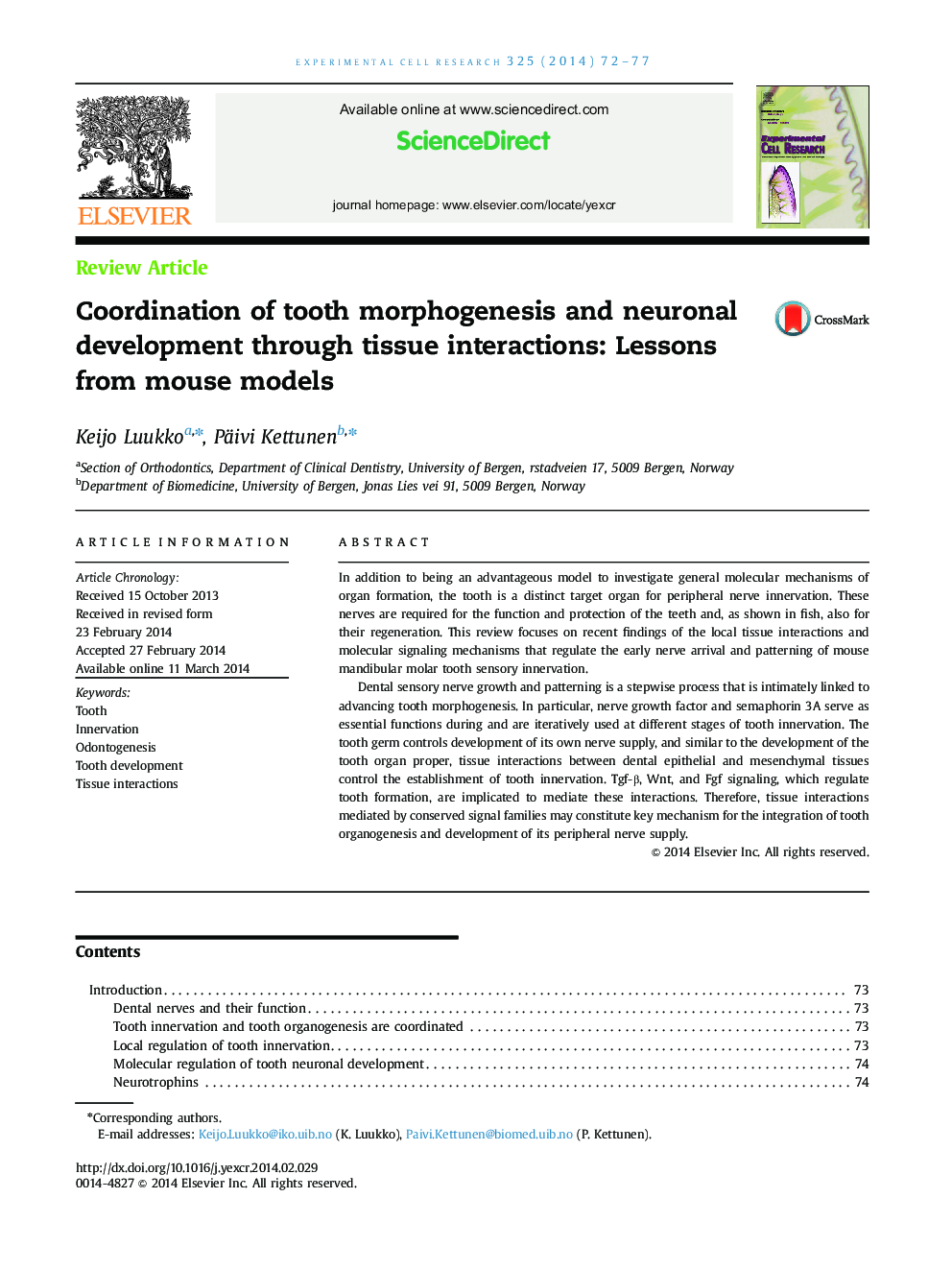| Article ID | Journal | Published Year | Pages | File Type |
|---|---|---|---|---|
| 2130244 | Experimental Cell Research | 2014 | 6 Pages |
•Nerves are required for the function and protection of teeth.•Nerves are also needed for tooth formation in fish.•Nerve growth and patterning is intimately linked to tooth morphogenesis.•Ngf and Sema3A serve as essential functions during tooth innervation.•Tissue interactions mediated by morphogens integrate tooth formation and innervation.
In addition to being an advantageous model to investigate general molecular mechanisms of organ formation, the tooth is a distinct target organ for peripheral nerve innervation. These nerves are required for the function and protection of the teeth and, as shown in fish, also for their regeneration. This review focuses on recent findings of the local tissue interactions and molecular signaling mechanisms that regulate the early nerve arrival and patterning of mouse mandibular molar tooth sensory innervation.Dental sensory nerve growth and patterning is a stepwise process that is intimately linked to advancing tooth morphogenesis. In particular, nerve growth factor and semaphorin 3A serve as essential functions during and are iteratively used at different stages of tooth innervation. The tooth germ controls development of its own nerve supply, and similar to the development of the tooth organ proper, tissue interactions between dental epithelial and mesenchymal tissues control the establishment of tooth innervation. Tgf-β, Wnt, and Fgf signaling, which regulate tooth formation, are implicated to mediate these interactions. Therefore, tissue interactions mediated by conserved signal families may constitute key mechanism for the integration of tooth organogenesis and development of its peripheral nerve supply.
